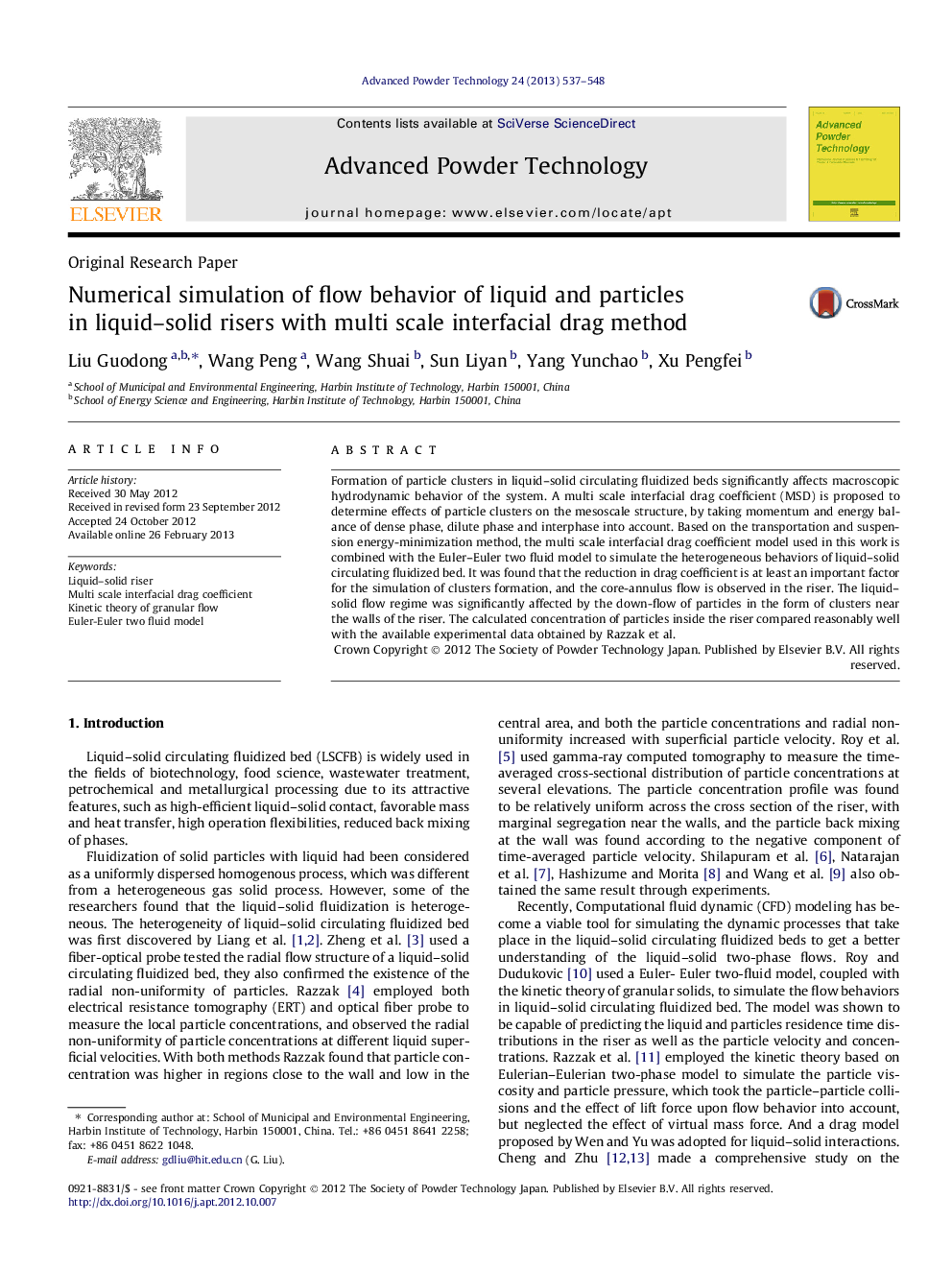| Article ID | Journal | Published Year | Pages | File Type |
|---|---|---|---|---|
| 144002 | Advanced Powder Technology | 2013 | 12 Pages |
Formation of particle clusters in liquid–solid circulating fluidized beds significantly affects macroscopic hydrodynamic behavior of the system. A multi scale interfacial drag coefficient (MSD) is proposed to determine effects of particle clusters on the mesoscale structure, by taking momentum and energy balance of dense phase, dilute phase and interphase into account. Based on the transportation and suspension energy-minimization method, the multi scale interfacial drag coefficient model used in this work is combined with the Euler–Euler two fluid model to simulate the heterogeneous behaviors of liquid–solid circulating fluidized bed. It was found that the reduction in drag coefficient is at least an important factor for the simulation of clusters formation, and the core-annulus flow is observed in the riser. The liquid–solid flow regime was significantly affected by the down-flow of particles in the form of clusters near the walls of the riser. The calculated concentration of particles inside the riser compared reasonably well with the available experimental data obtained by Razzak et al.
Graphical abstractFigure optionsDownload full-size imageDownload as PowerPoint slideHighlights► We proposed a multi scale interfacial drag coefficient (MSD) to determine effects of particle clusters on the mesoscale structure in liquid–solid circulating fluidized bed. ► The MSD coefficient takes the momentum and energy balance of dense phase, dilute phase and interphase into account. ► The core-annulus flow is observed in the liquid–solid riser. ► The liquid–solid flow regime was significantly affected by the down-flow of particles in the form of clusters near the walls of the riser.
